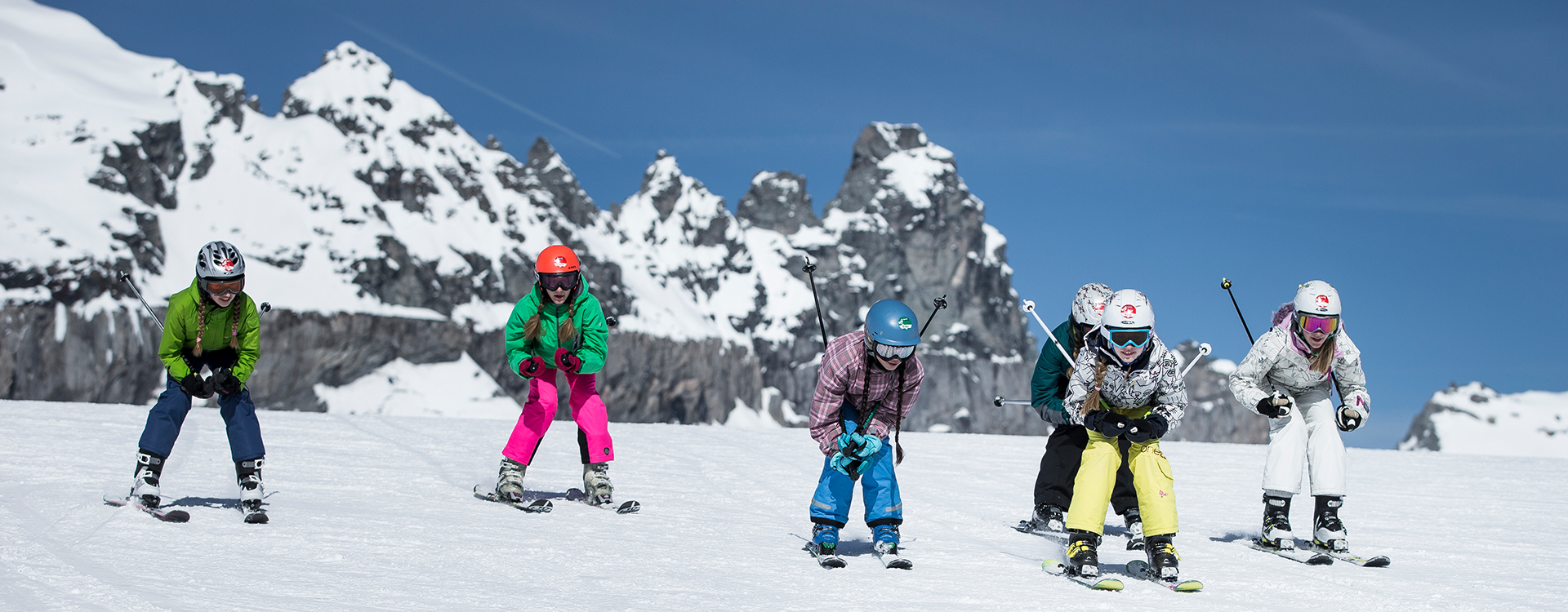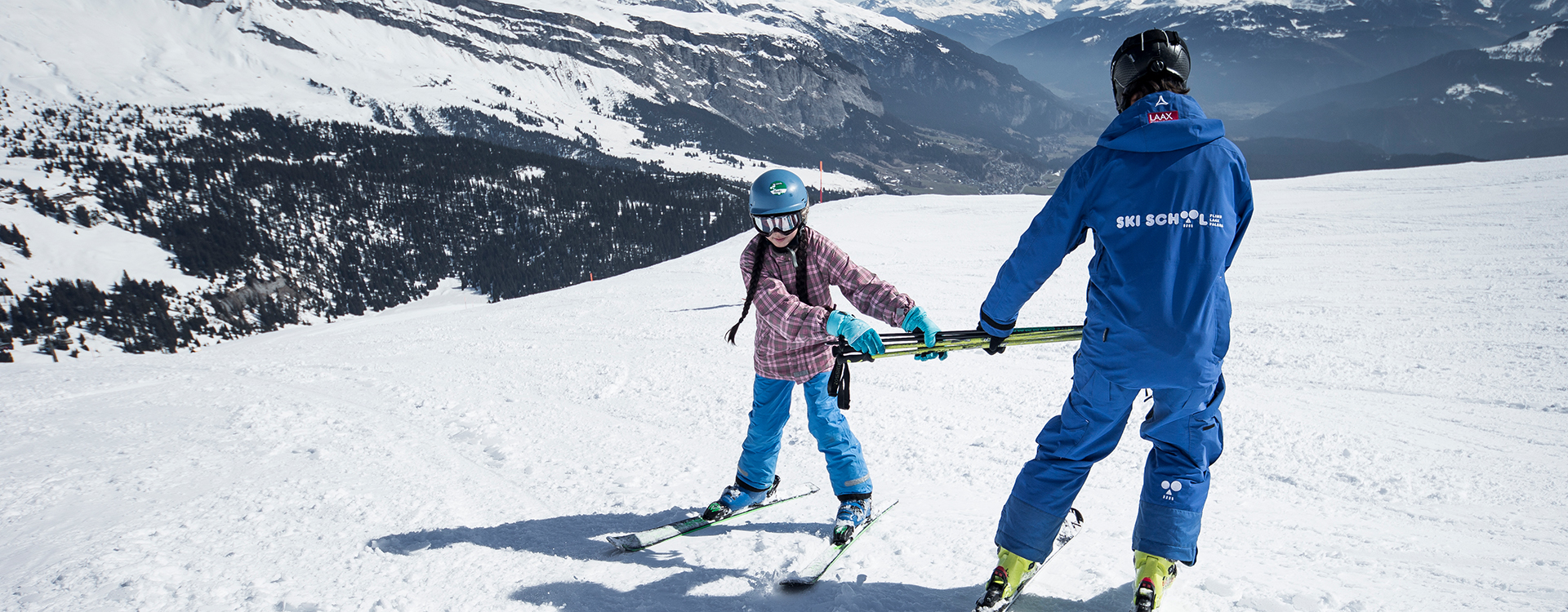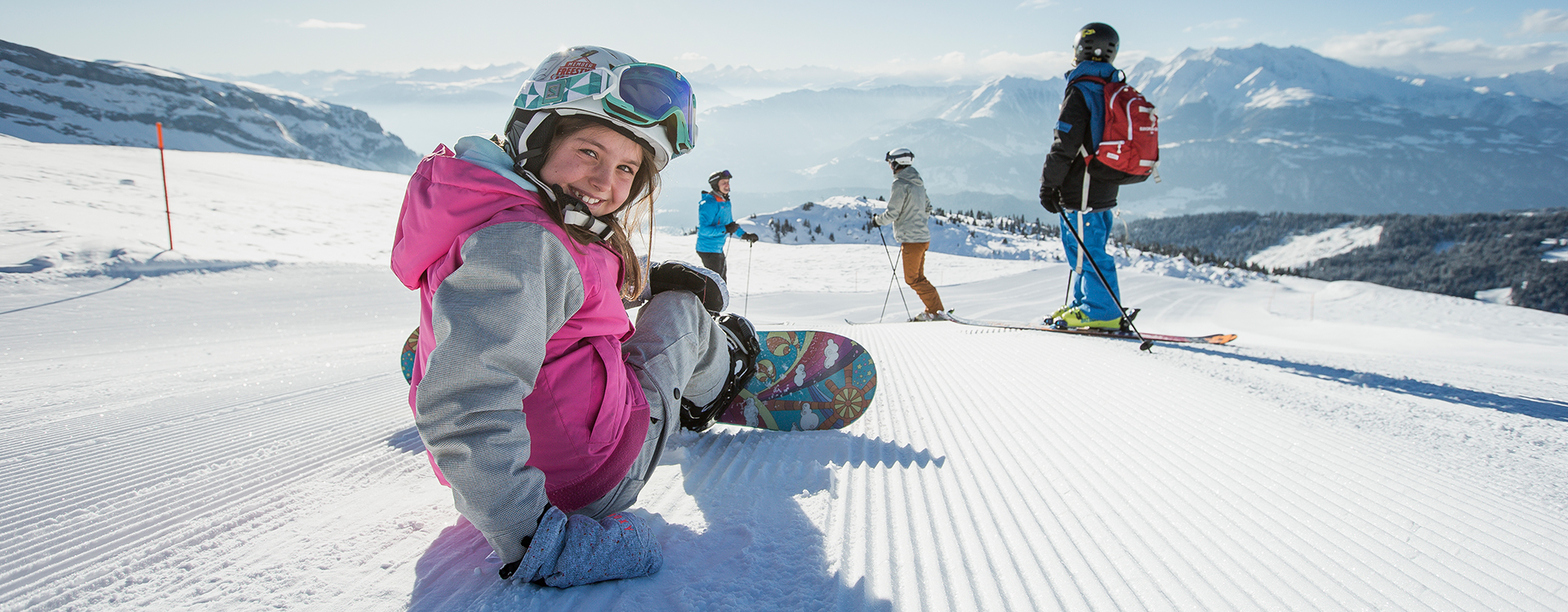Specials
Learning to ski and snowboard – safe manoeuvres in five easy steps
Everybody can learn to snowboard and ski. And that’s a promise! Whether you’re a child or an adult. With a little practice, you’ll be able to master safe manoeuvres in no time. To quickly turn your cautious sliding attempts into your first dynamic turns, we’ll give you the best tips for skiing and snowboarding beginners. It’s time to get your boards and try them out!
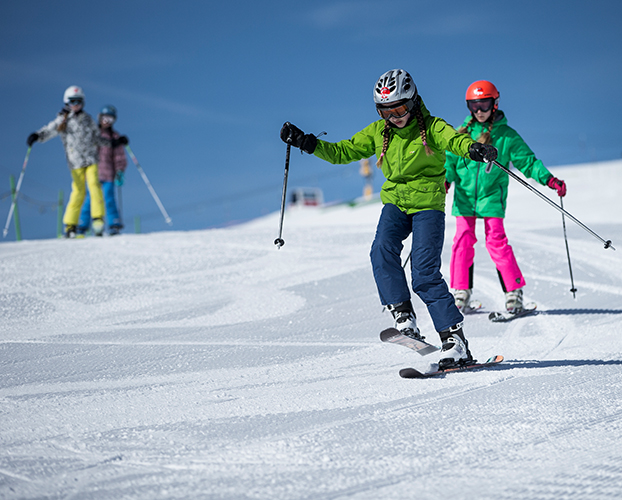
Learning to ski I: sliding and moving
Off you go! Try out how the skis feel on your feet when you move. It’s best to try this out on level ground. Move the skis forwards and backwards a little using the ski poles. Hop gently, with both of your legs and from one leg to the other. Or try to move with your skis, taking small steps forwards. Then remove one ski, and propel yourself forward, like with a kick scooter, and try to slide for as long as possible on one ski.
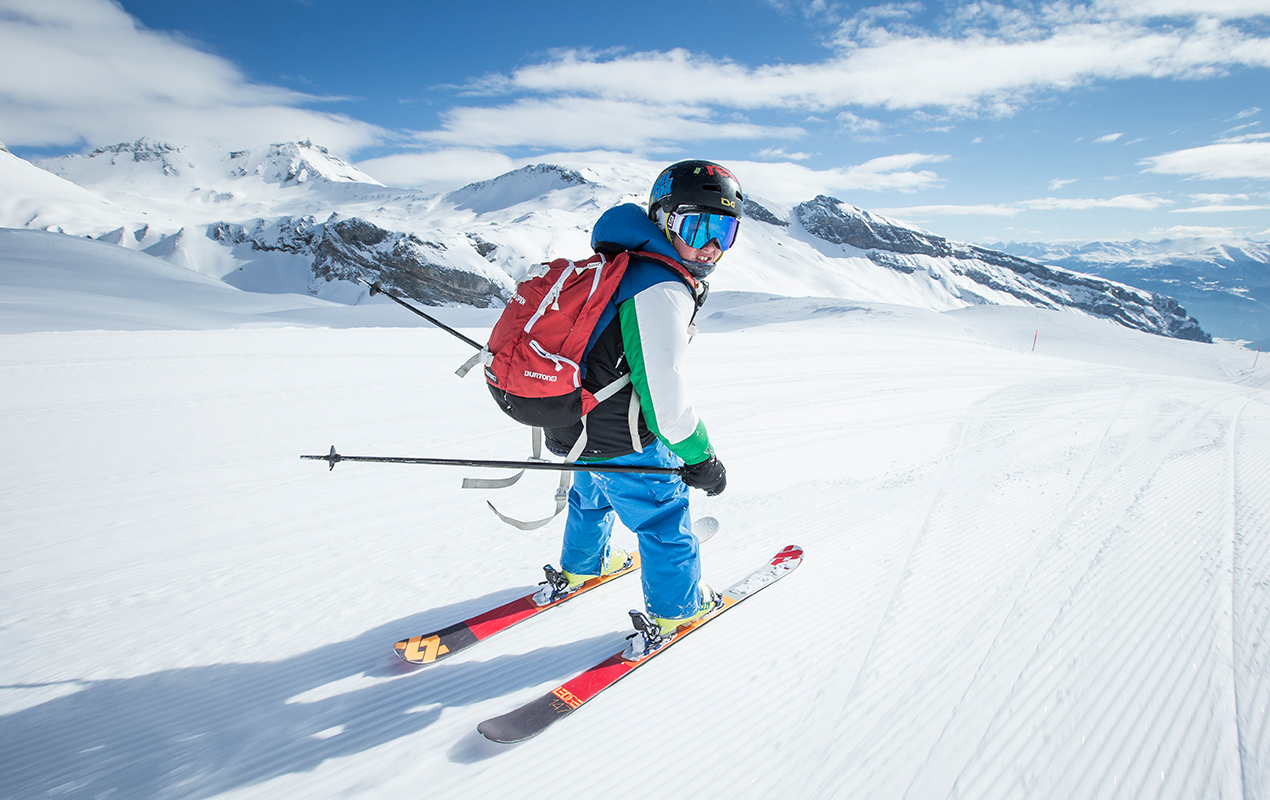
Learning to ski II: schuss and snowplough
What goes down must first go up. Find a gentle slope with a spacious run area. To climb the slope, use a technique like the sidestep climb. Stand sideways to the slope, with your skis parallel to your hips. Now step sideways up the slope, placing your weight on the upper edges of the skis to climb up. Once you reach the top, start a slow, straight schuss, without using sticks, keeping your skis parallel. Use the snowplough technique to slow down. Bring the tips of the skis together, creating a wide gap between the back of the skis. Now shift your weight onto the inside edges of the skis to slow down.
Learning to ski III: parallel turns and use of your poles
Ready for your first turns? One thing is particularly important when it comes to learning to ski. Children and adults alike should first learn how to slide and slow down safely on a gentle incline. Once you’ve mastered this, you can attempt your first arc manoeuvre in the snowplough position. During the snowplough manoeuvre, turn one knee in the uphill direction and shift your weight onto the outside ski. Then bring the skis slowly into a parallel position during the arc manoeuvre. To ensure that the edges receive the appropriate amount of pressure, use your hands to help you practise. Press your outer knee inwards and downwards with your hands. Once this is working well, add the ski poles. When using ski poles, remember that the skis always rotate around the poles. Before you begin the turn, place the pole into the snow on the inside of the turn. Now use the pole to gently push yourself back in the turn, thus turning the inner ski more gently and placing optimal pressure on the outer ski.
Learning to snowboard I: finding a standing position and keeping your balance
Two legs, one board: a shaky affair. To ensure a secure stance, first determine your standing position and set up the bindings accordingly. If you stand with your left foot forwards, your snowboarding style is known as ‘regular’, while if you stand with your right foot forwards, your style is ‘goofy’. You can determine which standing position is right for you with a little trick. Without a snowboard, ask a friend to give you a little push from behind when you are not expecting it. The foot that you move forward to balance yourself will be your frontmost foot on your snowboard.
Now try to find your balance on the snowboard with a few exercises on level ground. Fix one foot at a time, then both feet, in the binding, and stand on the board – relaxed, upright, with your knees slightly bent. Once you feel comfortable, stand on the soft snow together with your board and brace yourself for the unpleasant part of learning to snowboard – falling. When you fall forwards, get on your knees, clench your fists and break your fall with your lower arms shortly before you land. Falling backward is a little more challenging. Get on your knees and perform a forward roll with a rounded back.
Learning to snowboard III: slowing down
Particularly important for beginners: Learning to snowboard means practising slowing down! To do so, shift your weight onto your front foot during a gentle schuss. Now you can turn your board out of the fall line so that it is perpendicular to the slope. Now crouch down and place your weight onto the backside edge to slow down.
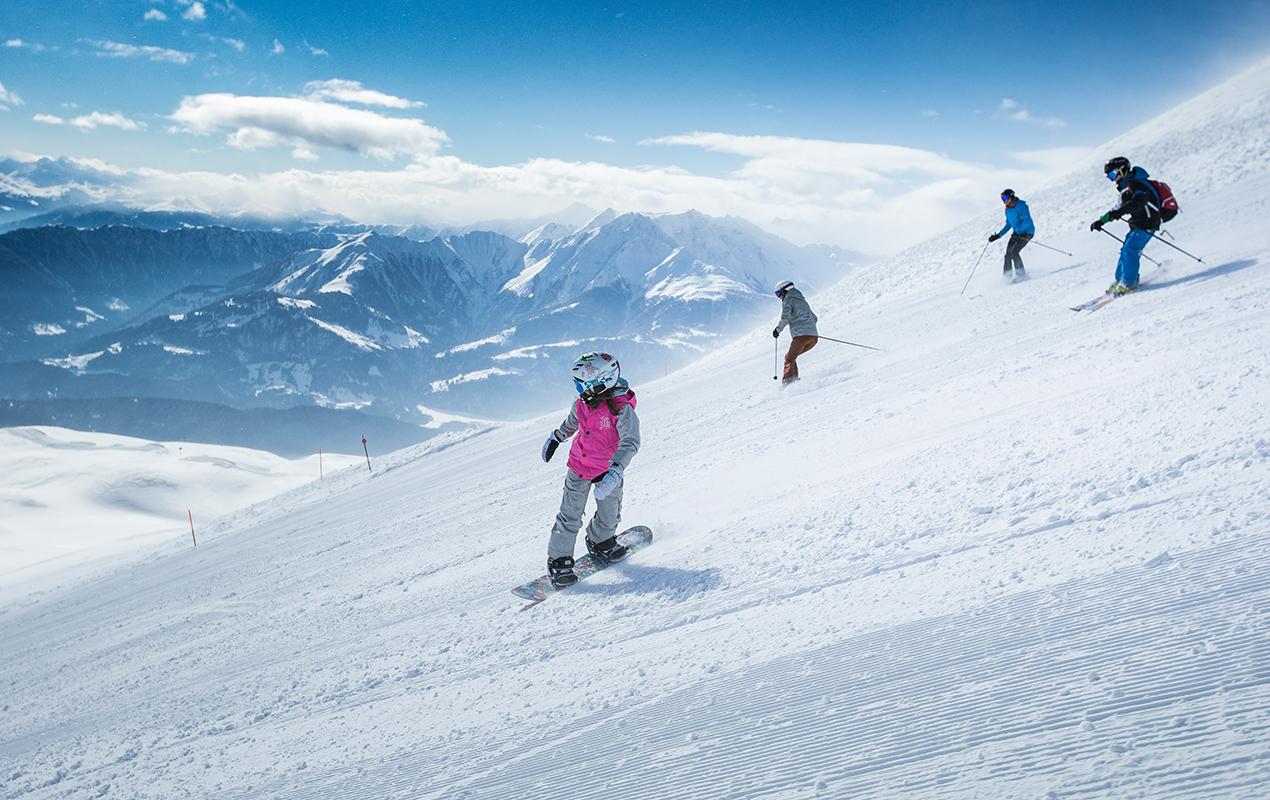
Whether you’re on one or two boards, with a little practice, you’ll be making confident turns on any type of slope. And if you can’t manage it all on your own, our instructors in the ski and snowboarding school will help you to make your dreams come true on the slopes.
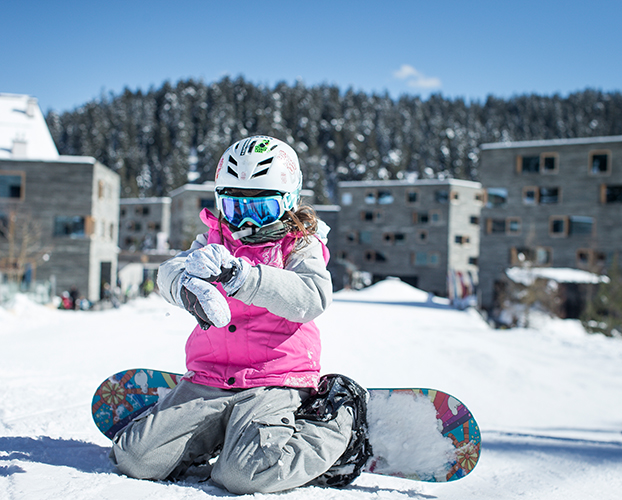
Learning to snowboard II: edging and schuss
Once you can stand fairly securely and have practised falling, you can practise the kick scooter technique with just one foot in the binding, like when learning to ski. Is this working? Then it’s time to hit the slopes. Perhaps you have somebody to hold your hand during your first attempts on the slopes. Stand with your back to the slope and shift your weight onto the backside edge. Now ease your weight gently away from the backside edge to get your board moving. You can control the speed by placing more (= slower) or less weight (= faster) on the backside edge. Try it out! Then repeat the same exercise facing the slope and on the frontside edge, and then finally on both sides without support.
Ready for your first schuss? Find a gentle slope with an upward run that will slow you down. Stand with your back to the slope again here leaning on the backside edge. You should be facing downhill. Now ease your weight gently from the backside edge and take your weight off of your front foot. Your board will then slide off and turn into the fall line.

